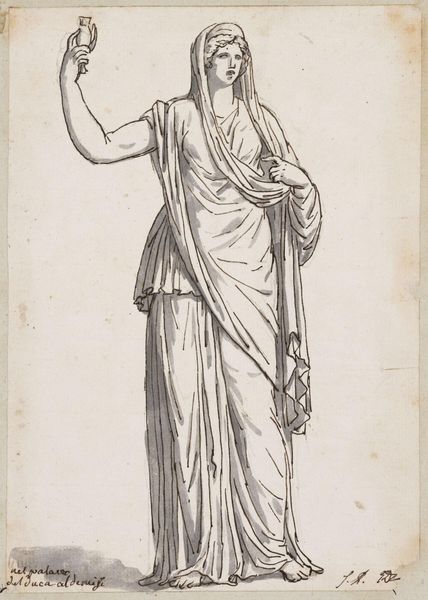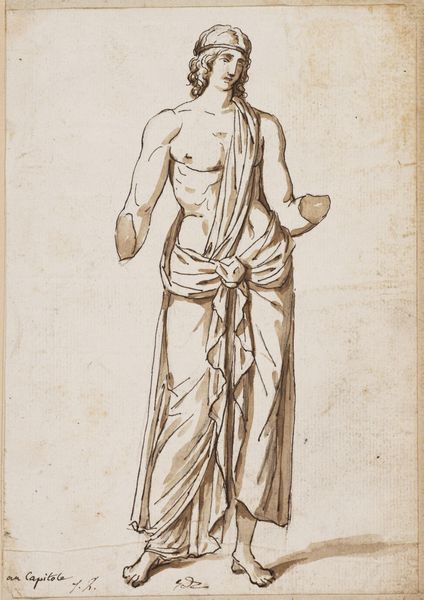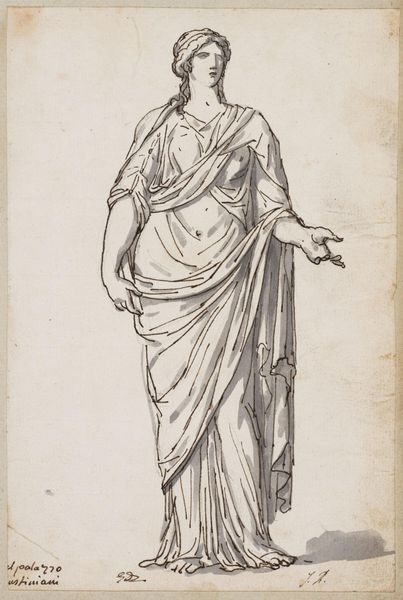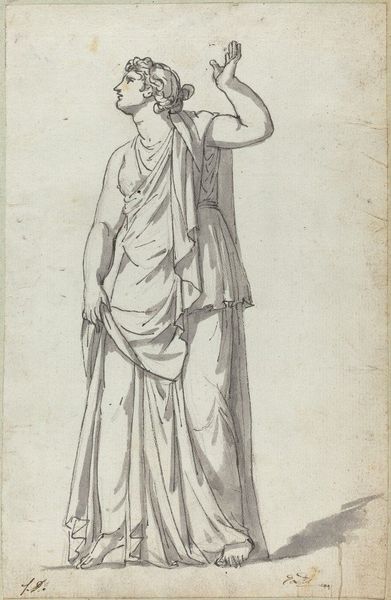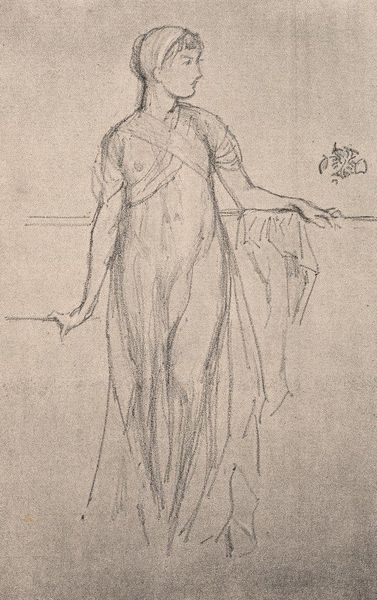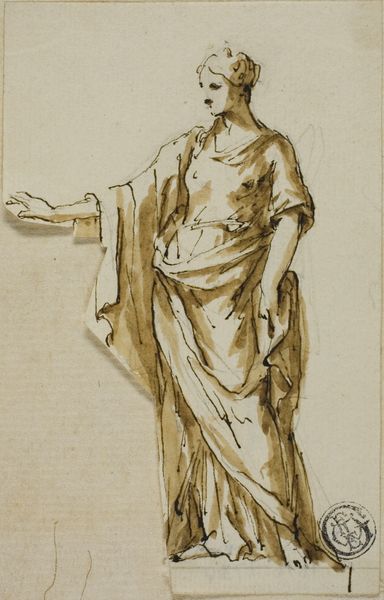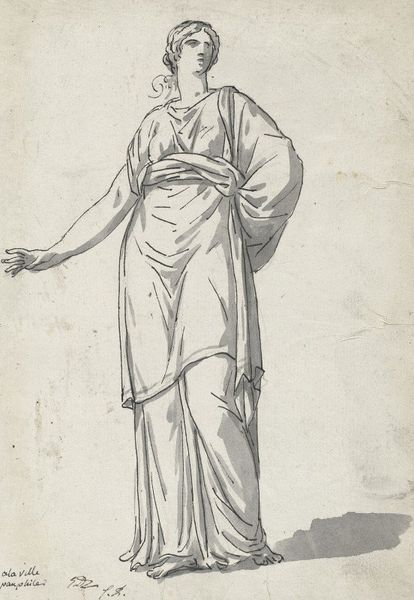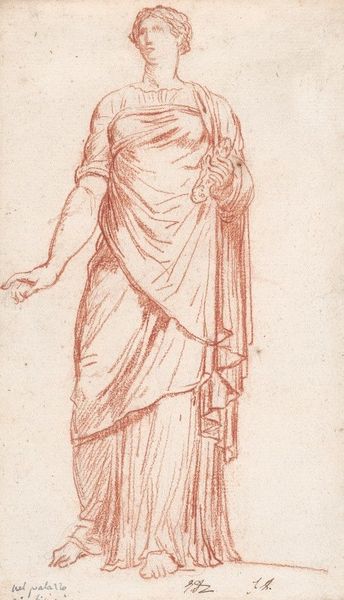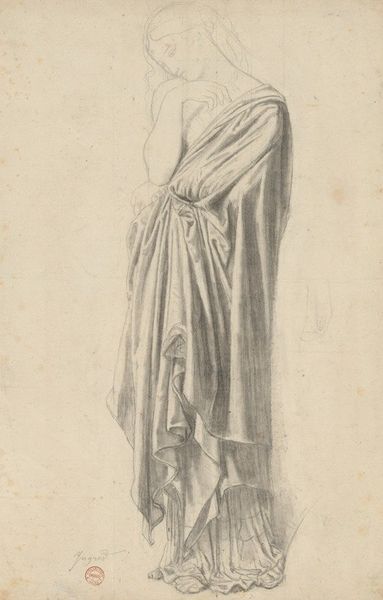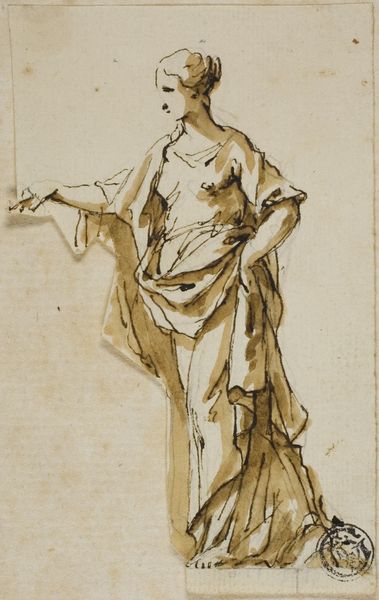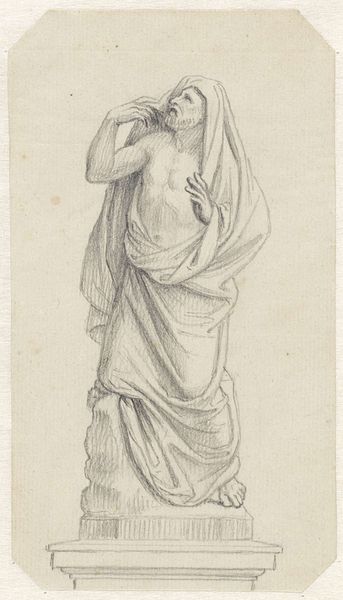
drawing
#
pencil drawn
#
drawing
#
toned paper
#
light pencil work
#
pencil sketch
#
personal sketchbook
#
pencil drawing
#
pen-ink sketch
#
portrait drawing
#
pencil work
#
fantasy sketch
Copyright: Public Domain: Artvee
Editor: This is Jacques Louis David’s "Study of the Sabine Statue from the Villa Medici," created around 1775 to 1780, using pencil on toned paper. It’s a delicate sketch of a standing woman in classical robes. What strikes me most is the way he captures the drape of the fabric, almost like a study in itself. How do you read this piece? Curator: This is a fascinating glimpse into David's artistic process. Forget the idealized image for a moment. Let’s think about the materiality. Consider the labor involved in producing this seemingly simple sketch. The pencil, the toned paper—each represents a stage of production, from the mining of graphite to the preparation of the paper surface. What does it mean to study a classical sculpture, especially one like this, which embodies notions of ideal beauty and stoicism, using readily available and relatively inexpensive materials like pencil and paper? Editor: I hadn’t considered it that way. It feels like he’s almost democratizing the process of studying classical forms by using everyday materials. It brings a sense of intimacy to a very grand subject. Curator: Precisely! And consider where this study might have been done. Was it in a formal studio? Or was it perhaps done outdoors in a park? What sort of access would be required for that? Think about how such accessibility changed art training during this period, moving away from rigid academic tradition toward something more available. Editor: So, it's not just about the statue itself, but about the process and materials, and how that changes our understanding of artistic training at the time? Curator: Exactly. By looking closely at the materials and means of production, we can uncover broader cultural shifts occurring in late 18th century art. It makes us question who had access to artmaking, how classical ideals were being reinterpreted and how even the humblest sketch holds valuable insights. Editor: That’s really changed how I see the sketch. It’s no longer just a quick study, but a record of labor, access, and cultural context! Curator: Yes, materiality matters. It’s an invitation to examine assumptions about high and low art.
Comments
No comments
Be the first to comment and join the conversation on the ultimate creative platform.
